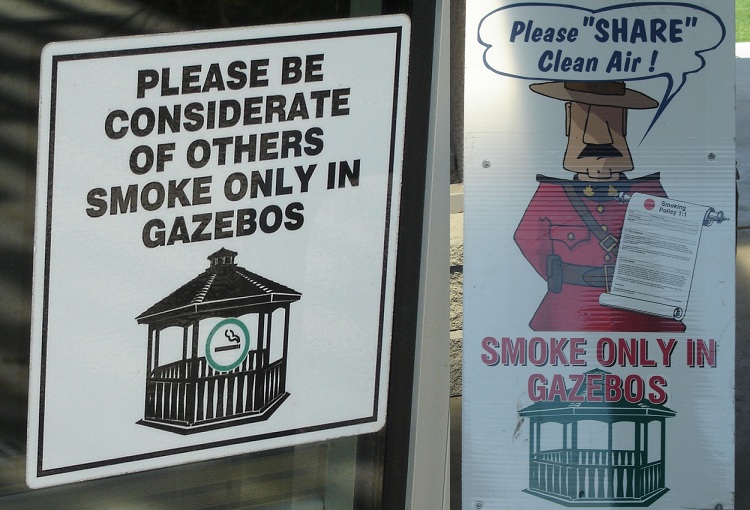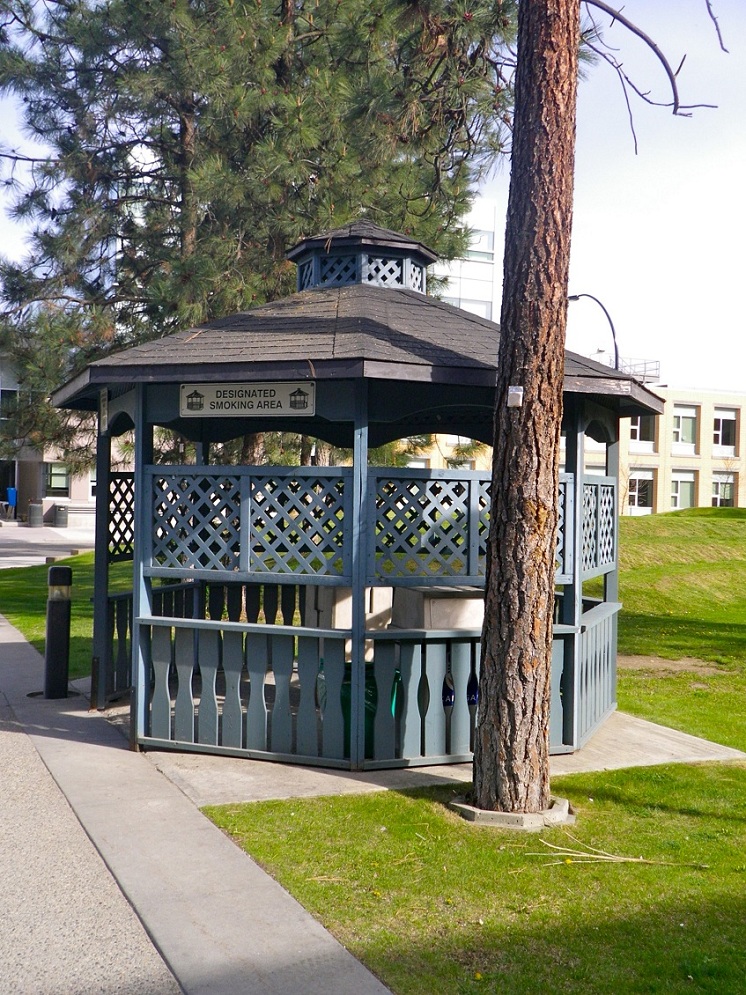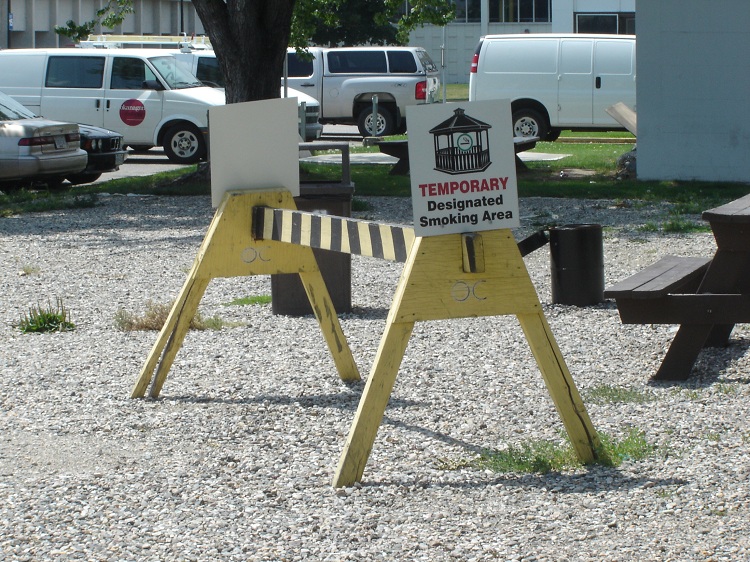A week ago, UBC’s policy on smoking was “amended to increase the minimum smoking distance between an outdoor smoking area and a doorway, window or air intake of a UBC Vancouver building from 6 metres to 8 metres.” This minor change was the only modification made to the policy.
While protecting everyone from second-hand smoke is admirable, it’s difficult to see what difference this extra two metres could possibly make besides administrative lip service and legal ass-covering. The previous 6 metre buffer was already double the BC Ministry of Health’s required distance of 3 metres and enforcement will be as non-existent at 8 metres as it was at 6 metres. The only group of people affected by this change are not smokers but rather UBC’s decal-making firm, who are thankful for UBC’s order of thousands of new door decals with the new 8 metre stipulation.
If UBC is looking to do more to get smokers away from buildings, windows and air intakes, why extend the buffer a measly 2 metres? Why not make a much bolder move, one that has already been successfully implemented at UBC’s Okanagan campus? Why not build gazebos for smokers?
On the surface, the concept of smoking gazebos might seem absurd. But UBC already has plenty of experience with them; under the same UBC smoking policy that was just amended, the entire UBC Okanagan campus is one giant no smoking area, except for 7 gazebos, scattered around campus, which are “Designated Smoking Areas”. The gazebos were an initiative of Okanagan College in the late 1990′s, introduced with the sole intention of drawing smokers away from entryways and heavily-travelled areas and creating designated spaces for smokers. Originally, 10 gazebos were constructed and placed on Okanagan College’s various campuses around Vernon and Kelowna. Since then, more have been added. In 2005, when UBC inherited one of Okanagan College’s Kelowna campuses to create UBC-O, the gazebos came with it.
A survey of smokers at UBC-O showed more than 85% of smokers comply with the use of the gazebos. UBC-O health and wellness staff took advantage of having a place where smokers congregate to offer them help in quitting. Schools and hospitals elsewhere have also installed smoking gazebos and reported favourable results.
Because the Point Grey campus is so much larger than the Okanagan campus, it may seem more difficult logistically to set up a network of gazebos covering the whole campus. But as far as UBC projects go, this would be small potatoes. There’s a massive 15-year public realm renewal project currently underway, including a giant fountain and water features. For a university that managed to cover large swaths of campus with condos, construction of two dozen gazebos in strategic spots on campus is well within their capabilities.

Signs on doors (L) and sandwich boards (R) informing people about the smoking gazebos. The decal-makers made out well on this job too.
With smokers comprising about 20% of the student population, the regional dean of Okanagan College said the biggest challenge is constantly educating students about the campus’s smoking policy. Signs are posted prominently all over campus telling smokers where to go and reminders are given to students observed smoking in other areas. However, on the whole the system seems to work quite well for both smokers and non-smokers alike… except for when the gazebo goes missing.








Discussion
Comments are disallowed for this post.
Comments are closed.